The Passive Identity Agent Identity Source
The passive identity agent identity source sends session data from Microsoft Active Directory (AD) to the Secure Firewall Management Center. All you need is a supported Microsoft AD setup as discussed in About Realms and Realm Sequences.
 Note |
You do not need to configure the Cisco Identity Services Engine (ISE) to use this identity source. |
Passive identity agent roles
The passive identity agent supports the following roles:
-
Standalone: A passive identity agent that is not part of a redundant pair. A standalone agent can download users and groups from multiple Active Directory servers and domain controllers, provided the software is installed on all of them.
-
Primary: (Primary agent in a redundant pair.) Can be installed on a Microsoft AD domain controller, directory server, or any network client.
Handles all communication with the Secure Firewall Management Center unless it stops communicating, in which case communication is handled by secondary agents.
-
Secondary: (Secondary, or backup, agent in a redundant pair.) Can be installed on a Microsoft AD domain controller, directory server, or any network client.
Monitors the health of the primary agent and takes over if the primary agent stops communicating with the Secure Firewall Management Center.
Passive identity agent system requirements
The passive identity agent requires the following:
-
If you install it on a Windows Active Directory server, the server must run Windows Server 2008 or later.
-
If you install it on a Windows client attached to the domain, the client must run Windows 8 or later.
-
The system clock on all systems must be synchronized. We strongly recommend using the same NTP servers on all of them. This means:
-
The Secure Firewall Management Center.
For more information, see Time Synchronization.
-
All Windows Active Directory servers and domain controllers.
-
The machine on which the passive identity agent is installed.
-
-
Secure Firewall Management Center must run 7.6 or later.
-
Any Secure Firewall Threat Defense managed by the Secure Firewall Management Center must run 7.0.x or later.
-
You must enable Snort 3 on the Secure Firewall Threat Defense devices.
Passive identity agent limitations
The passive identity agent the following limitations:
-
Up to 10 agents simultaneously
-
One passive identity agent identity source can monitor up to 50 AD directories
-
Up to 300,000 concurrent user sessions
-
IPv6 addresses are not supported
Deploy the passive identity agent
For information about deployment options, see Deploy the Passive Identity Agent.
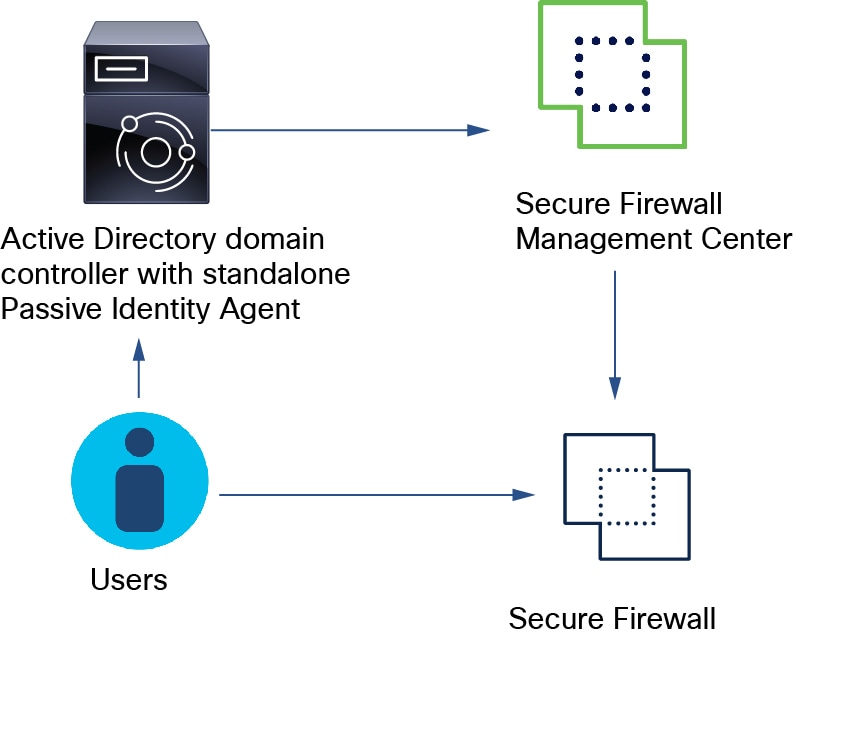
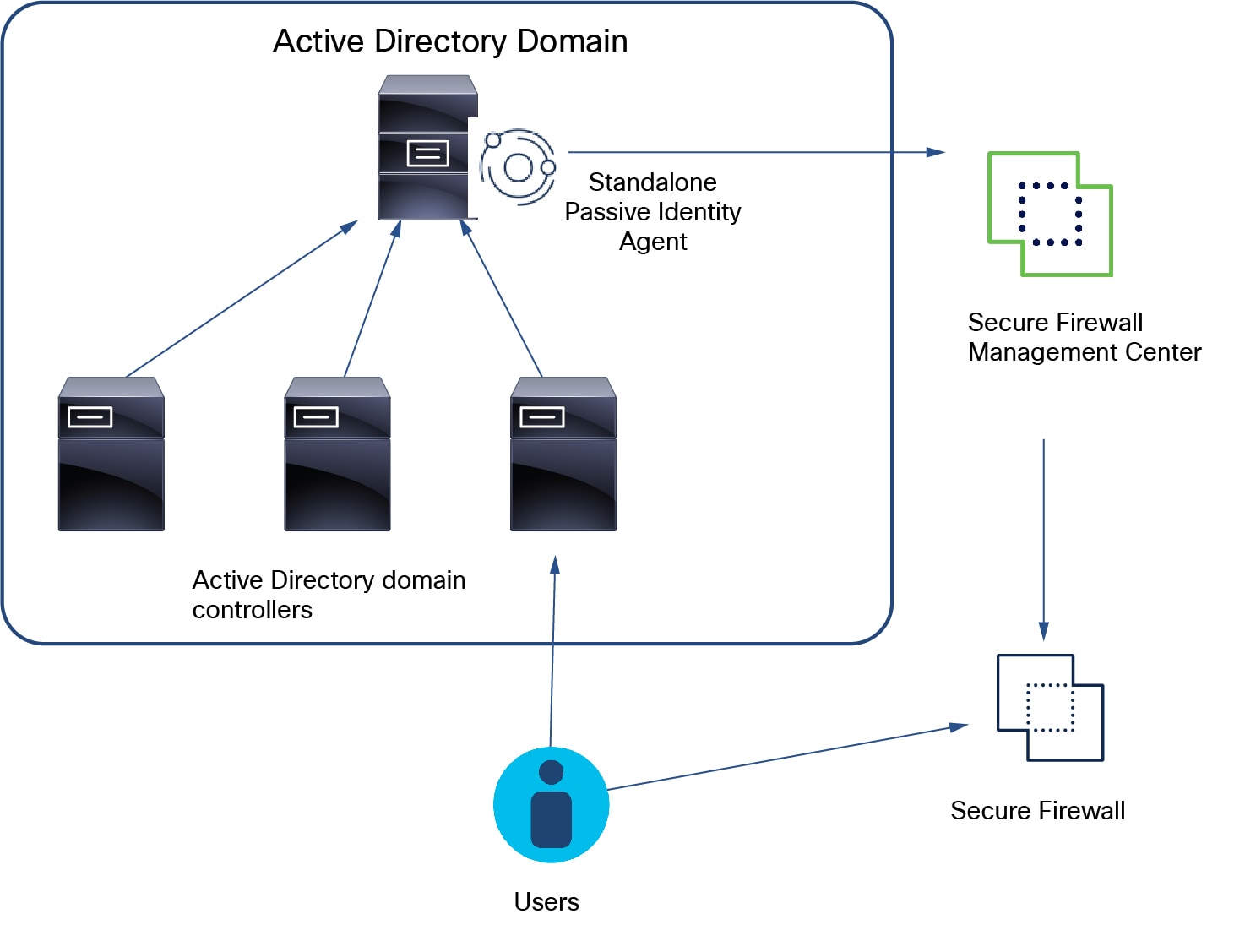
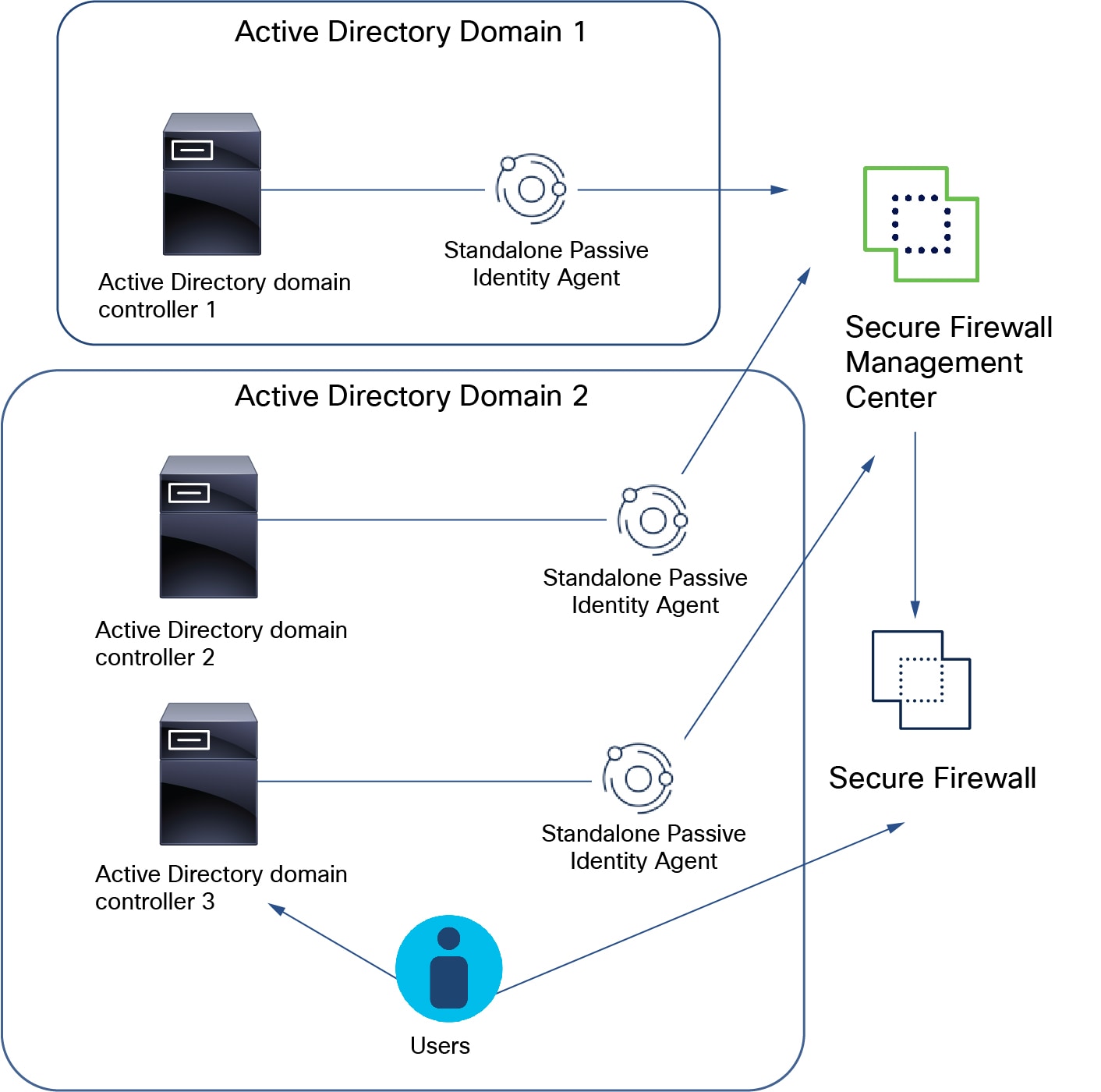
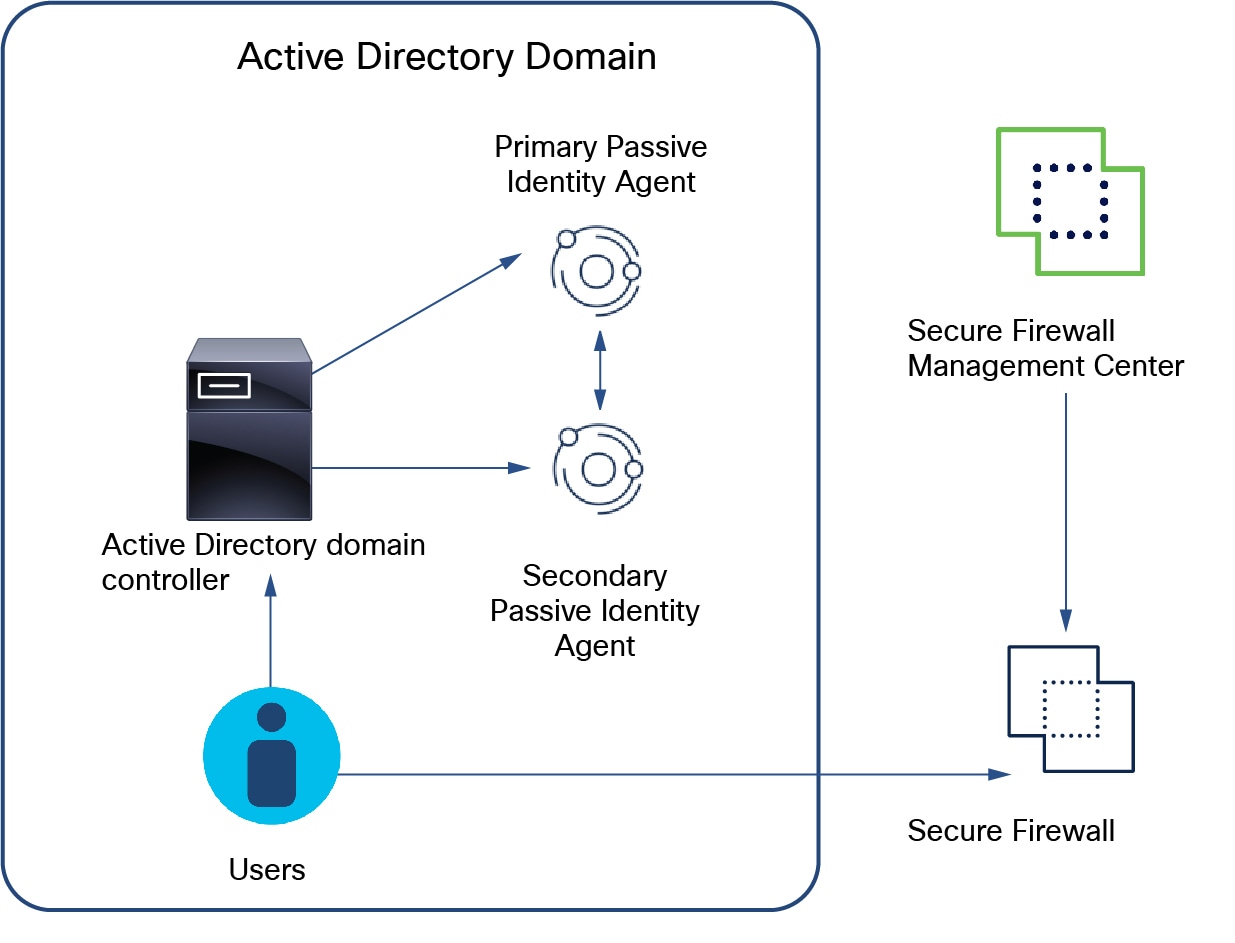

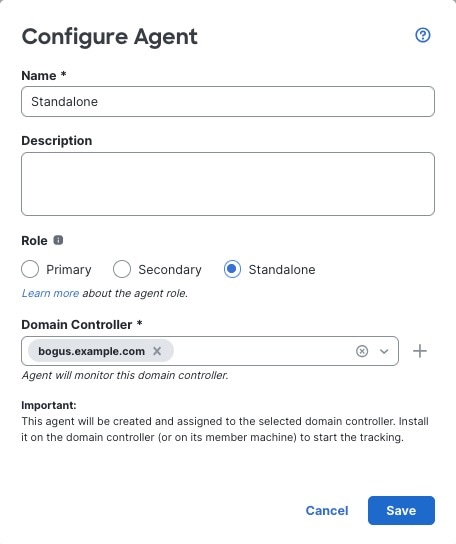
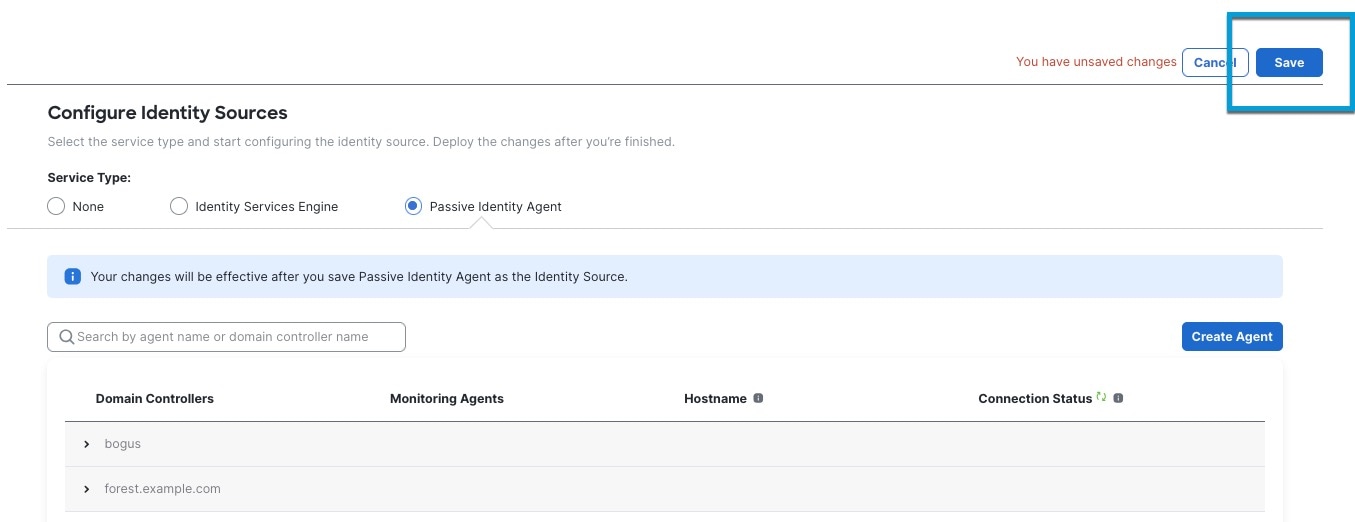
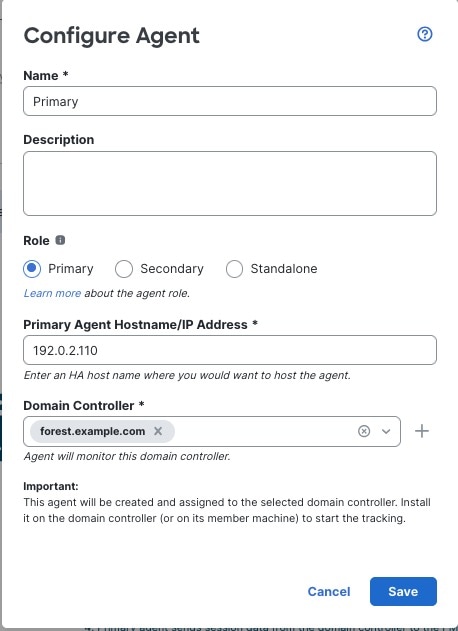



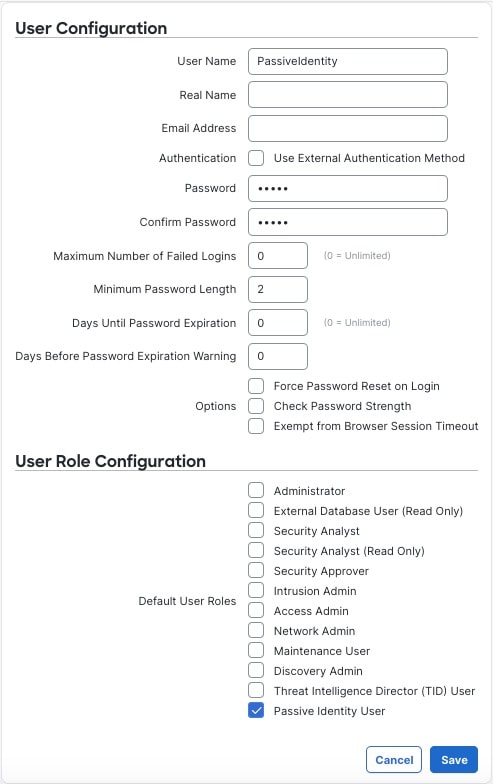
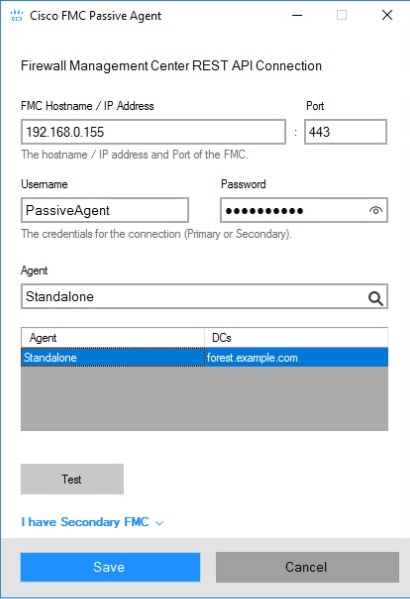
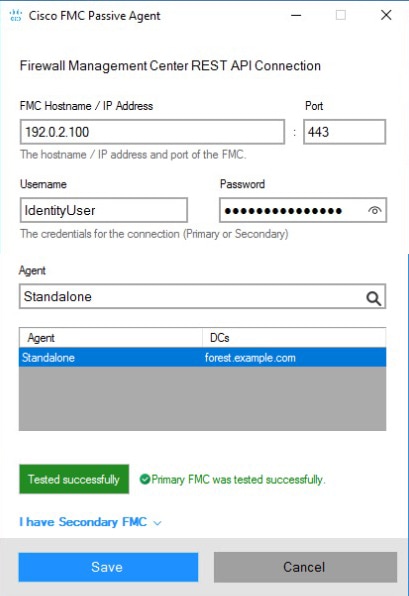










 Feedback
Feedback